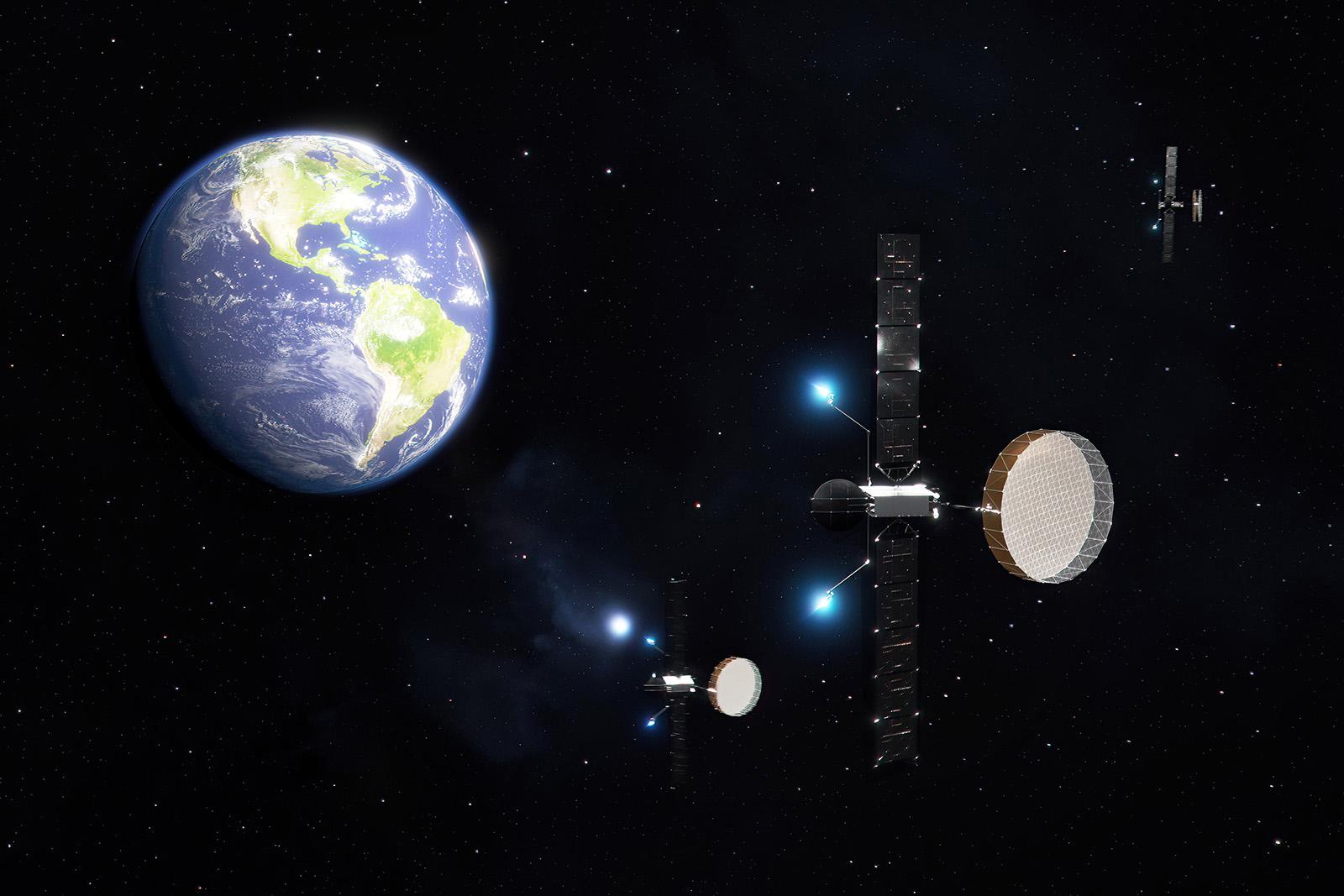
Astranis says costs will fall enough for corporations to own their own communications satellite.
COLORADO SPRINGS—Astranis unveiled its next-generation Omega geostationary (GEO) satellite design, a larger version of its “micro” communications satellite.
The company plans to start launching the spacecraft for customers in 2026, with a prototype of the satellite to launch in 2025, said John Gedmark, CEO and co-founder of the aerospace manufacturer, at the Space Symposium here April 10.
“It uses a much larger deployable reflector to achieve 50 Gbps,” he said. “That’s a 5x throughput increase compared to what we’ve been doing with our original satellite design.”
The Omega satellite has a wet mass of 650 kg (1,430 lb.) and is 2 m X 2.1 m X 1.2 m (6.5 X 7 X 4 ft.) when stowed for launch. A typical medium-class launch vehicle could launch 12 of the spacecraft at once.
“For our U.S. government customers, this will now mean true proliferated GEO for the first time,” Gedmark said.
The company is considering competing in the Protected Tactical SATCOM-Global (PTS-G) program, a U.S. Space Force proposal in the fiscal year 2025 budget to develop a disaggregated and proliferated set of communications satellites.
The Omega satellite has several technology upgrades over Astranis’ current offering of MicroGEO satellites, including solid-state power amplifies that increase capacity and allow the spacecraft to cover a “medium-sized country” area, Gedmark said.
The GEO satellite will transmit in Ka-, Mil Ka-, or X-band radio. Its software-defined radio will support advanced waveforms such as the U.S. military’s Protected Tactical Waveform.
The satellite also has a separate, independently steerable gateway antenna.
“We have moved up to very high-frequency Q/V frequencies for this independently steerable gateway antenna,” Gedmark said. “That allows the gateway to actually be on a totally different continent, in a very different place than the primary area that we’re serving.”
The company says the Omega satellite will bring down costs enough to make it feasible for corporations, such as those in the oil-and-gas industry, to dedicate a satellite exclusively to their own communications.
“In some cases, we are seeing customers, especially for industrial applications, wanting it to be fully self-contained, a totally self-contained network that is air-gapped from the entire rest of the internet,” Gedmark said.
The Omega will not have laser or radio communications cross-links to form a mesh network with other satellites, but the technology is on Astranis’ product development road map, he added.
The next-generation satellite will use an all-electric propulsion system and have a 10-year life span.
“We can do many, many, many relocations around the GEO belt over the lifetime,” Gedmark said.
The company is ramping up production to build as many as 24 Omega satellites per year, he adds.





